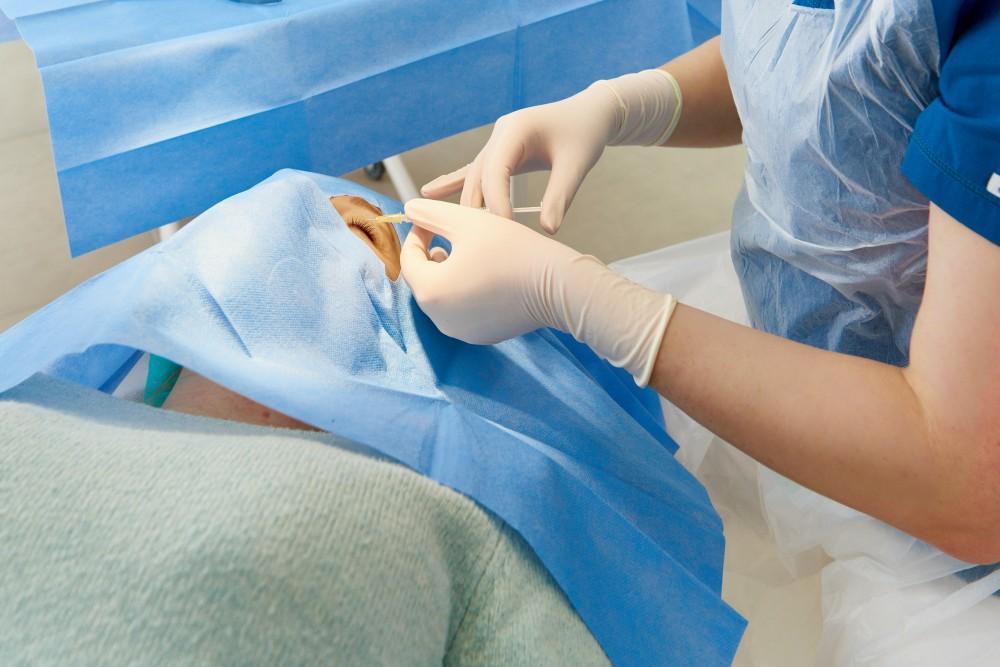
Can I Do Anything to Prevent Macular Degeneration?

Macular degeneration, aka age-related macular degeneration (AMD), is a progressive eye disease that affects about 11 million Americans, most of them older adults. In fact, AMD is the leading cause of vision loss in the older population — more than cataracts and glaucoma combined.
AMD develops when the central region of the retina, the light-sensing tissue found at the back of the eye, starts to degrade. This small area, comprising only 2% of the retina, is called the macula, and it’s what registers your clear, central vision.
Unlike other age-related vision problems, AMD doesn’t cause total blindness. That’s because it only affects the macula; your peripheral vision remains intact. However, no matter where you look, you see a black spot in the middle of your visual field. It prevents you from doing things like reading, driving, and even recognizing faces and colors.
The expert team of ophthalmologists at Retina Specialists specializes in diagnosing and treating all types of retinal diseases, including macular degeneration. Our goal is to preserve as much of your vision as possible, allowing you the best possible quality of life.
If you’re at risk for developing AMD, here’s what you need to know and do.
AMD: Vision breakdown
The eye functions much like a camera; a clear lens takes the incoming light and focuses it on the light-sensitive material inside. In the eye, the material is the retinal tissue located at the back of the eye, especially the macula, which sends the highly detailed information directly in front of the lens to the optic nerve. The information then moves to the brain’s visual cortex, where it’s decoded.
When the macular tissue degrades, though, it can’t record the incoming information properly, so what you see is a partial image with a black “hole” in the center. In advanced stages, even the partial image disappears.
AMD comes in two forms: wet and dry.
Dry macular degeneration (atrophic)
Eighty-five to 90% of all AMD cases are the dry form. The macular tissue thins and accumulates drusen, small deposits of proteins and lipids. While drusen most likely don’t cause AMD by themselves, having them is an early sign you have the disease.
Symptoms of dry AMD include a black spot in your central vision, blurred vision, straight lines appearing wavy, a need for brighter lighting, difficulty recognizing faces, and further damage to the retina.
Not only is there no cure for dry AMD, but until 2023, the only treatment consisted of a course of low vision rehabilitation.
In 2023, however, the FDA approved Syfovre (pegcetacoplan) and Izervay (avacincaptad pegol), two drugs aimed at treating geographic atrophy (GA), also called late-stage dry AMD. Both target pathways in the immune system and can prevent progression of the disease.
Wet macular degeneration (exudative)
While only 10-15% of AMD cases are the wet form, most of these patients experience the dry form first.
With wet AMD, abnormal blood vessels develop behind or on the retina. These vessels are weak and leak fluid into the macula, damaging the cells and leading to scar tissue build-up.
While most of the symptoms mirror the dry form, wet AMD causes additional visual disturbances because of the leaky vessels, and it progresses faster than the dry form.
Wet AMD patients also benefit from low vision rehabilitation, but there’s another treatment that can help preserve your remaining sight.
Originally developed as a way to rob colon cancer of its blood supply, antivascular endothelial growth factor (anti-VEGF) medications prevent the growth of new blood vessels on the retinal tissue. These drugs are injected directly into the eye at regular intervals, halting the disease’s progression.
An important note for both forms: Once macular damage has occurred and vision is lost, you can’t reverse the situation. The GA and anti-VEGF medications can only prevent future deterioration.
Can I do anything to prevent macular degeneration?
The short answer is not much. Researchers don’t yet know the exact cause(s) of AMD, in part because there hasn’t been enough support to conduct the necessary research trials. What they do know, however, is that both forms probably stem from both genetic and environmental factors.
The biggest risk factor for AMD is unquestionably age, hence the “A” in “AMD.” It develops most commonly in men and women 55 and older. Additional risk factors include:
- Smoking
- Being Caucasian
- Sustaining a facial/eye injury
- Having a family history of the condition
You can stay ahead of the curve, though, by getting regular annual (or semi-annual) eye exams. If the doctor can catch the symptoms early on, macular degeneration’s easier to treat, and it results in more positive outcomes.
To learn more about macular degeneration, or to schedule a comprehensive eye exam with one of our providers, call Retina Specialists at any of our five Texas locations (Dallas, DeSoto, Plano, Mesquite, and Waxahachie) today.
You Might Also Enjoy...


How Aging Impacts Retinal Health

Vitrectomy: The Outpatient Surgery That Can Save Your Vision

When to Seek Treatment for Eye Trauma

What Happens During a Diabetic Eye Exam?


